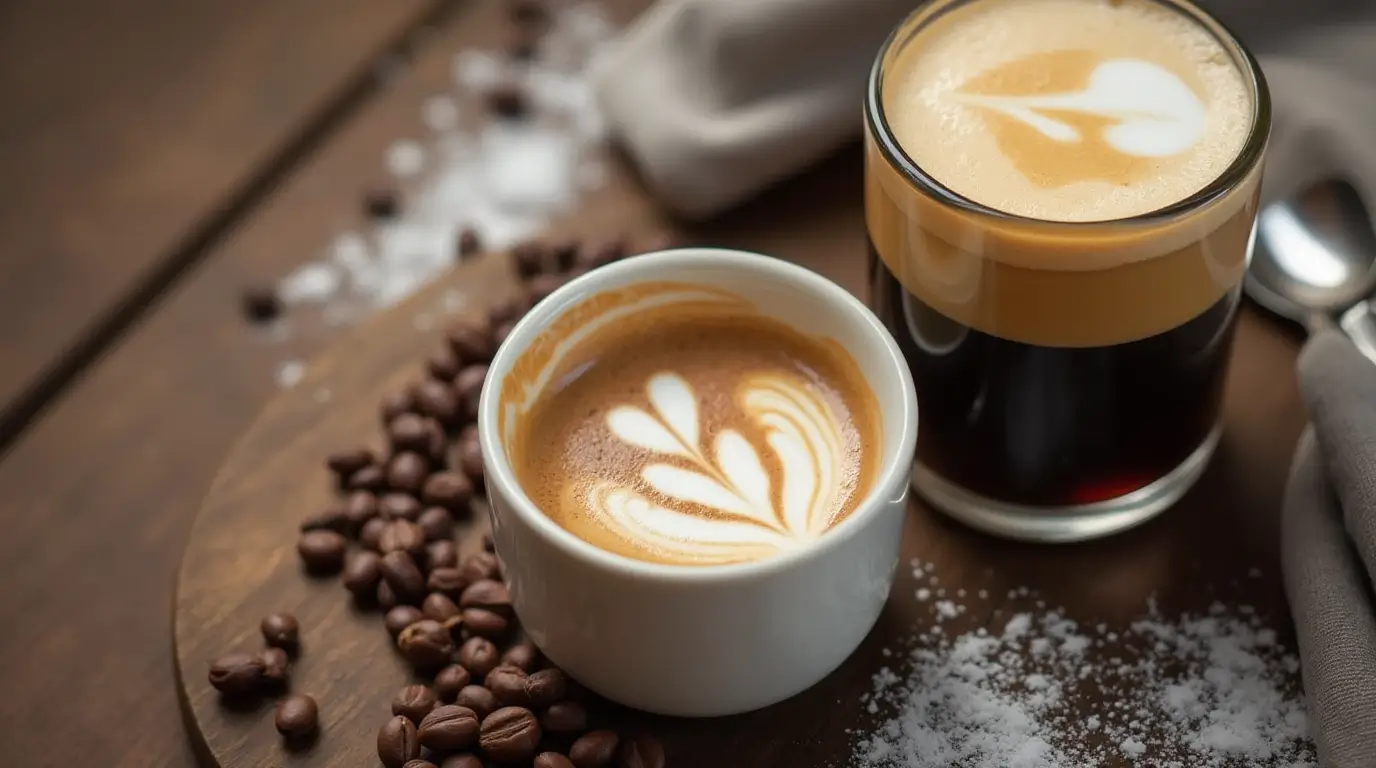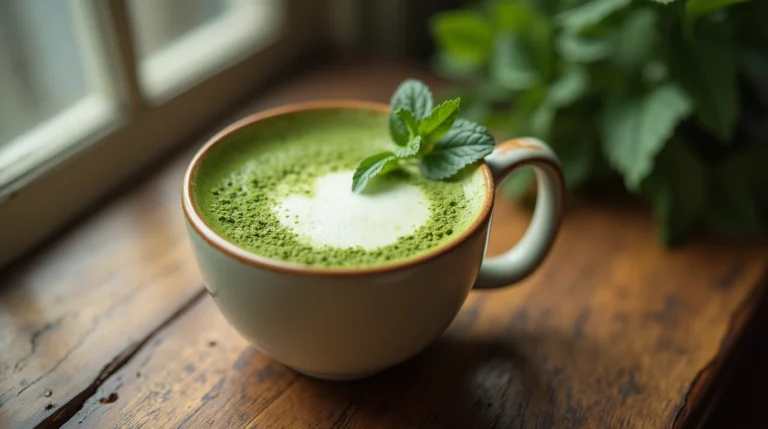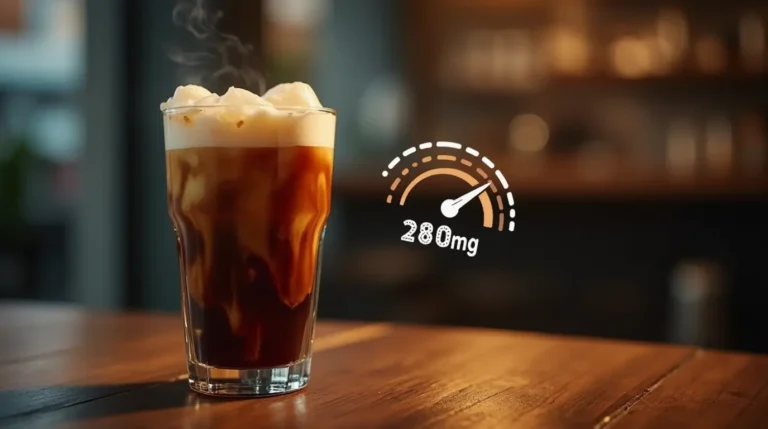Macchiato 101: What Is a Macchiato and How to Make One at Home
If you’ve ever stood in line at a coffee shop wondering what is a macchiato, you’re not alone. This bold and flavorful espresso drink has sparked curiosity among coffee lovers everywhere. With its rich Italian roots and modern-day café twist, the macchiato is more than just a trendy order — it’s a delicious bridge between the intensity of espresso and the smoothness of milk.
In this post, we’ll break down exactly what a macchiato is, how it compares to other popular coffee drinks, and how you can make one right at home. Whether you’re a seasoned espresso enthusiast or just starting your coffee journey, you’re about to discover why the macchiato is a must-try classic.
Table of Contents
What Is a Macchiato?
Meaning and Origin of the Macchiato
The word macchiato comes from Italian, meaning “stained” or “marked.” This refers to how the drink is made—either an espresso “stained” with a touch of milk or, in the case of a latte macchiato, milk “marked” with a shot of espresso. It’s a small but meaningful difference that captures the essence of Italian coffee culture: balance, simplicity, and precision.
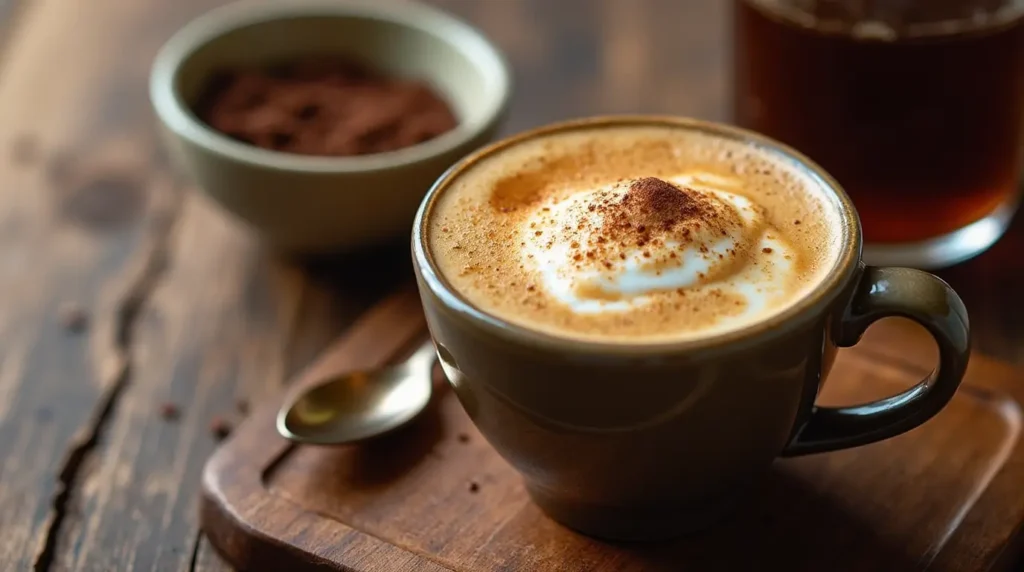
Originating in Italy, the macchiato was created to satisfy espresso drinkers who wanted just a splash of milk to soften the intensity without diluting the rich, bold flavor. Baristas would “mark” the espresso with a little milk to indicate that it wasn’t a straight shot.
Over time, especially with the rise of global coffee chains like Starbucks, the macchiato evolved into more elaborate versions—adding milk, foam, syrups, and even layers of caramel. But at its heart, the macchiato remains a simple, bold drink that celebrates espresso in its purest form.
Key Ingredients in a Macchiato
Despite its variety of interpretations, a classic macchiato keeps things minimal. Here are the typical ingredients you’ll find:
- Espresso: The foundation of every macchiato. A single or double shot of freshly brewed espresso provides the bold, rich flavor that defines the drink.
- Milk or Milk Foam: Just a small amount—typically a teaspoon or two—is added on top of the espresso to mellow the flavor slightly.
- Optional Flavors: Modern macchiatos often include additions like caramel, vanilla, or other flavored syrups. These aren’t traditional, but they add a sweet twist many people enjoy.
The beauty of the macchiato lies in its simplicity. Unlike a latte or cappuccino, it’s not milk-heavy. The espresso takes center stage, and the milk is simply there to complement, not overshadow.
Types of Macchiatos
There are a few popular types of macchiatos you might come across, each with its own unique characteristics:
Espresso Macchiato
This is the traditional version. A single or double shot of espresso with just a dollop of milk foam on top. Strong, bold, and perfect for espresso purists.
Latte Macchiato
A more milk-forward version. This drink starts with steamed milk, into which a shot of espresso is poured—creating a layered look. It’s creamier and milder than the espresso macchiato.
Caramel Macchiato (Starbucks Style)
This popular twist begins with vanilla syrup and steamed milk, followed by espresso poured on top and finished with a generous caramel drizzle. It’s sweet, indulgent, and a far cry from the traditional macchiato—but a fan favorite nonetheless.
Common Macchiato Variations:
Here are a few popular versions of the macchiato you might want to try:
- Traditional Espresso Macchiato – Simple and bold with a light touch of milk.
- Iced Caramel Macchiato – A chilled version of the Starbucks favorite with sweet layers of syrup and espresso.
- Vanilla Latte Macchiato – Steamed milk infused with vanilla, topped with espresso.
- Coconut Milk Macchiato – A dairy-free option that adds a hint of tropical flavor to the classic drink.
Macchiato vs Other Coffee Drinks
Understanding the difference between a macchiato and other espresso-based drinks can be a bit confusing, especially with so many options on café menus. Here’s how the macchiato compares to its most common coffee cousins: the latte, cappuccino, and mocha.
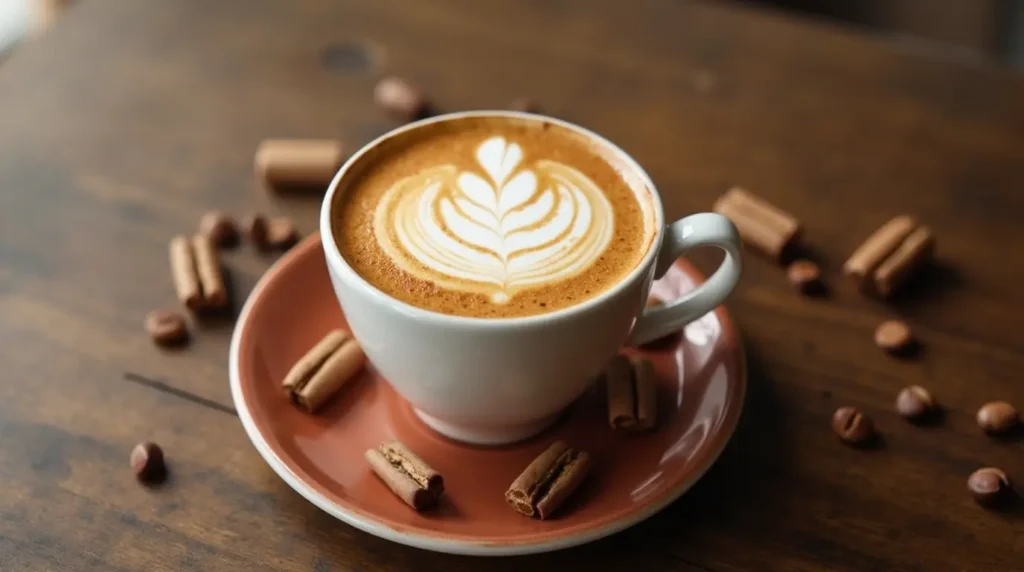
Macchiato vs Latte
While both the macchiato and the latte are espresso-based drinks, they differ significantly in milk ratio, flavor profile, and serving size.
- Milk Ratio: A macchiato uses just a splash of milk or milk foam, whereas a latte is primarily steamed milk with one or two shots of espresso. Lattes usually have a milk-to-espresso ratio of 3:1 or more.
- Flavor Profile: The macchiato is bold and intense, letting the espresso shine through. The latte, on the other hand, is creamier and milder due to the larger amount of milk, making it a great option for those who prefer a less strong coffee flavor.
- Serving Size: A macchiato is typically served in a small cup (2–3 oz), while a latte is served in a much larger cup or mug (8–16 oz), making it more of a sippable beverage.
Summary:
Macchiato = espresso with a kiss of milk
Latte = milk with a hint of espresso
Macchiato vs Cappuccino
Both drinks use espresso and milk, but their textures and presentation are quite different.
- Foam Thickness: Cappuccinos are known for their thick, velvety foam topping. A traditional cappuccino has equal parts espresso, steamed milk, and milk foam. The macchiato, however, only has a tiny bit of milk foam—just enough to “mark” the espresso.
- Espresso Content: Both usually use a single or double shot of espresso, but the cappuccino’s milk and foam balance the intensity more than the macchiato’s minimal milk addition.
- Taste Differences: A cappuccino offers a more balanced taste—creamy, smooth, and slightly sweet. A macchiato delivers a much stronger espresso flavor due to the limited milk.
Summary:
Macchiato = sharp and bold
Cappuccino = smooth and airy
Macchiato vs Mocha
The mocha is often seen as a dessert-like drink compared to the minimalist macchiato.
- Presence of Chocolate: This is the biggest difference. A mocha includes chocolate syrup or cocoa powder, adding a rich sweetness that makes it more indulgent.
- Milk Amount: Mochas are similar to lattes in terms of milk content. They contain steamed milk and a light layer of foam, unlike the macchiato’s minimal milk.
- Sweetness Level: Mochas are typically much sweeter than macchiatos, especially when topped with whipped cream or chocolate drizzle. The macchiato, unless flavored, contains no added sugar or syrups.
Summary:
Macchiato = espresso-forward
Mocha = espresso with chocolatey richness
Quick Comparison Table
Here’s a simple breakdown of the main differences:
| Coffee Drink | Espresso | Milk | Foam | Sweetness |
|---|---|---|---|---|
| Macchiato | ✔️ | Minimal | Light | Low |
| Latte | ✔️ | Steamed Milk | Light | Medium |
| Cappuccino | ✔️ | Steamed Milk | Thick | Medium |
| Mocha | ✔️ | Steamed Milk | Light | High (with chocolate) |

How to Make a Macchiato at Home
Making a macchiato at home is easier than you might think — and you don’t need a fancy café setup to get started. With a few essential tools and fresh ingredients, you can whip up a delicious espresso macchiato (and even a caramel one!) in just a few minutes.
Tools You’ll Need
Before jumping into the recipe, let’s go over the tools you’ll need. While a few are optional, the right equipment can help you create a macchiato that rivals your favorite café.
- Espresso Machine or Moka Pot
A high-quality espresso machine is ideal, but a moka pot can work well too. The goal is to extract a strong, concentrated shot of espresso as the base of your drink. - Milk Frother or Steam Wand
To create the iconic “mark” of milk foam on top, you’ll need to froth a small amount of milk. You can use a steam wand, handheld milk frother, or even shake warm milk in a jar as a DIY method. - Coffee Grinder (Optional but Recommended)
Freshly ground coffee beans make a noticeable difference in flavor. If you have a burr grinder, grind your beans just before brewing for the richest taste.
Pro Tip:
If you’re using pre-ground espresso, make sure it’s a fine grind for maximum flavor extraction.
Macchiato Recipe (Classic Style)
Now let’s make a traditional espresso macchiato. This recipe is simple, authentic, and all about that bold espresso flavor.
Recipe Table:
| Ingredient | Quantity |
|---|---|
| Fresh espresso | 1 shot (30 ml) |
| Steamed milk or foam | 1–2 teaspoons |
| Optional: sweetener | To taste |
| Optional: flavor syrup | 1 pump (optional) |
Step-by-Step Instructions:
- Brew Your Espresso
Use your espresso machine or moka pot to brew one fresh shot of espresso (about 30 ml). Pour it into a small cup. - Froth a Small Amount of Milk
Heat about 2–3 tablespoons of milk and froth it until you get light, airy foam. You only need a spoonful, so don’t overdo it. - Spoon the Foam Over the Espresso
Carefully add 1–2 teaspoons of milk foam on top of the espresso. This is the “mark” that gives the macchiato its name. - Customize (Optional)
If you like, add a dash of sweetener or a pump of your favorite flavored syrup. Traditional macchiatos don’t include flavoring, but it’s your drink—make it your way!
How to Make a Caramel Macchiato (Bonus Variation)
Want something a little sweeter and more indulgent? Try making a caramel macchiato—Starbucks-style—at home. This version is more like a latte macchiato, with layers of flavor and a rich caramel drizzle.
Steps:
- Add Vanilla Syrup to the Milk
Pour 1 pump of vanilla syrup into your milk before frothing to add sweetness and aroma. - Froth and Pour the Milk First
Steam or froth your milk and pour it into your glass or mug first. You’ll be layering the espresso on top. - Pour the Espresso Over the Milk
Slowly pour a shot of espresso over the frothed milk. This creates that classic layered look with the espresso floating on top. - Drizzle with Caramel Sauce
Finish by drizzling caramel sauce over the foam. You can go light or generous depending on your sweet tooth.
Optional Tip:
For an iced version, simply pour the milk and syrup over ice, then top with espresso and caramel.
Macchiato Brewing Tips and Common Questions
Whether you’re crafting a macchiato with an espresso machine or working with what you’ve got at home, the good news is: you can still enjoy a delicious cup. Let’s dive into alternatives, bean choices, and common pitfalls to avoid.
Can You Make a Macchiato Without a Machine?
Yes! While a proper espresso machine delivers the most authentic flavor and crema, you can still make a satisfying macchiato at home without one. Here’s how:
- Use Strong Brewed Coffee or Stovetop Espresso
A moka pot (also known as a stovetop espresso maker) is a fantastic alternative that produces rich, concentrated coffee. If that’s not available, use a French press or drip machine with double the amount of coffee grounds to create a stronger brew that mimics espresso. - Froth Milk with a Whisk or Jar
Don’t have a milk frother? No problem. Heat a small amount of milk (2–3 tablespoons), then:- Use a whisk and beat vigorously until foam forms.
- Or, pour the milk into a mason jar, seal it, and shake it for 30–60 seconds. Then microwave it briefly (10–15 seconds) to stabilize the foam.
Quick Hack:
Use plant-based milks like oat or almond—they froth well even without professional tools!
Best Beans for a Macchiato
The flavor of your macchiato starts with the beans. Since macchiatos highlight the espresso more than milk-based drinks do, bean choice really matters.
- Medium to Dark Roast Espresso Beans
These roasts bring out bold, full-bodied flavors with less acidity, which balances beautifully against the small amount of milk or foam in a macchiato. - Arabica vs Robusta Flavor Notes
- Arabica Beans: Smoother, sweeter, with hints of fruit or chocolate. Great for a well-rounded macchiato.
- Robusta Beans: Stronger, more bitter, with a heavier body and more caffeine. Often found in espresso blends for an extra kick.
Pro Tip:
Look for beans labeled “espresso roast” for the best results, but don’t be afraid to experiment with single-origin beans for unique flavor twists.
Common Mistakes to Avoid
Even though a macchiato is a simple drink, a few small missteps can make a big difference. Here are the most common ones to avoid:
- Using Too Much Milk
Remember: a macchiato is not a mini latte. The milk should only stain or lightly top the espresso. Using too much dilutes the bold espresso flavor. - Over-sweetening
The charm of a macchiato lies in its strong, unmasked flavor. Adding too much sugar or syrup can overpower the espresso and turn it into a dessert drink. - Mixing It Up with a Latte
A latte has more milk and is blended together, while a macchiato keeps the espresso and milk more distinct. Don’t stir your macchiato unless you’re aiming for a custom version.
Top 3 Barista Tips for the Perfect Macchiato
Here are quick, actionable tips from seasoned baristas that’ll help you get café-level results at home:
- Always Use Freshly Ground Espresso Beans
Grinding beans just before brewing maximizes flavor and aroma—key for a drink where espresso is the star. - Don’t Overheat the Milk
Heat milk to around 150°F (65°C). Overheating can cause a scorched taste and ruin the foam texture. - Let the Espresso Shine
The milk and foam should enhance, not compete with, the espresso. Less is more when it comes to additions.
Conclusion
Now that you know exactly what a macchiato is and how to make one at home, it’s time to get brewing! Whether you’re crafting a classic espresso macchiato or indulging in a sweet caramel variation, this simple yet flavorful drink is sure to elevate your coffee game. Remember, the key is using quality ingredients, the right tools, and, most importantly, enjoying the process.
So, next time you’re craving a bold cup of coffee, skip the coffee shop and make your own macchiato—it’s easier than you think and just as delicious! Happy brewing!

